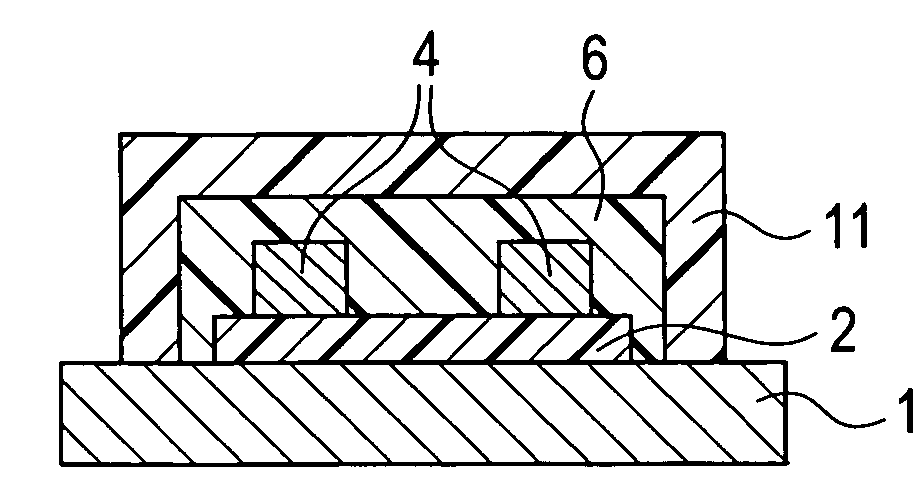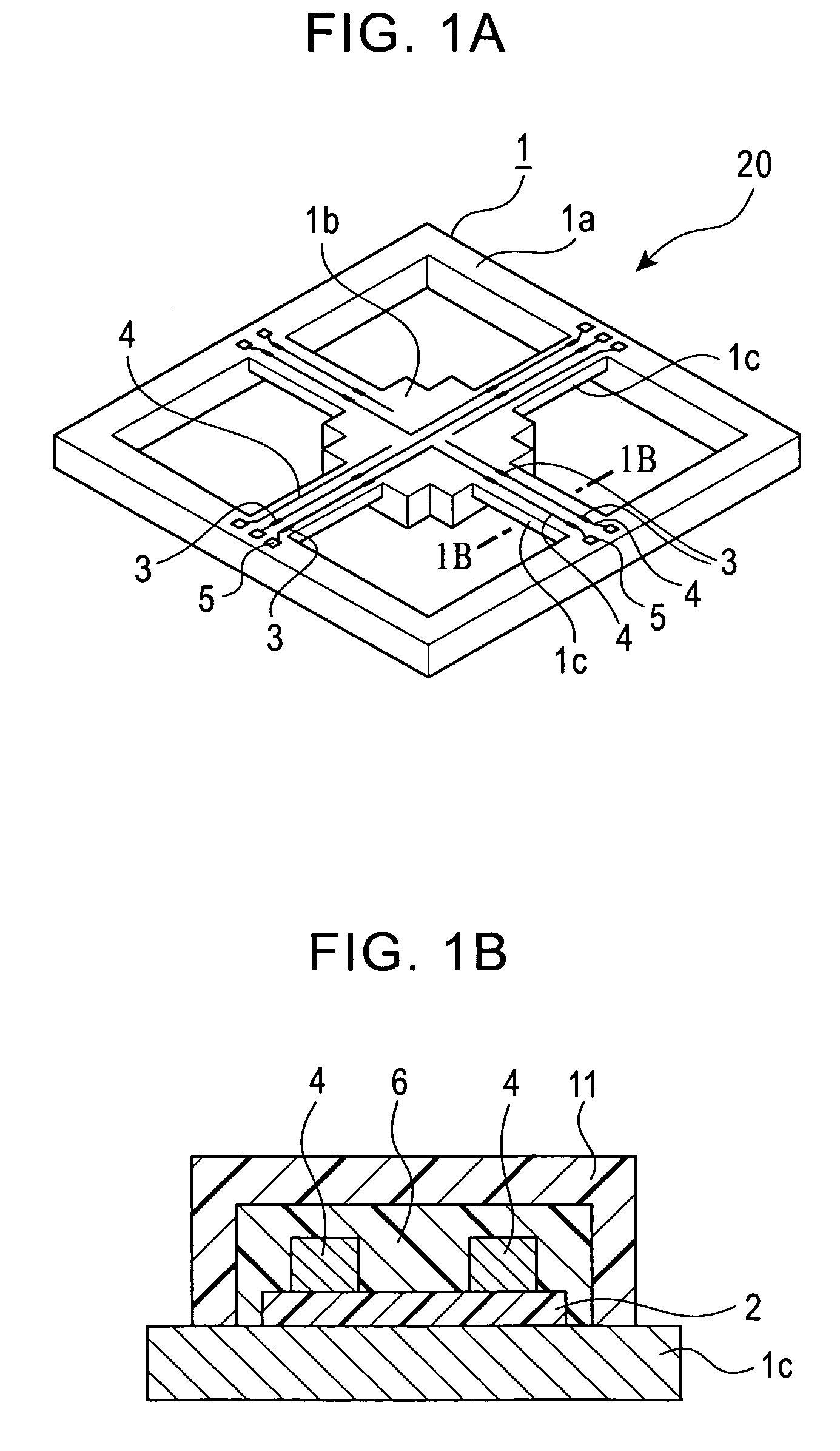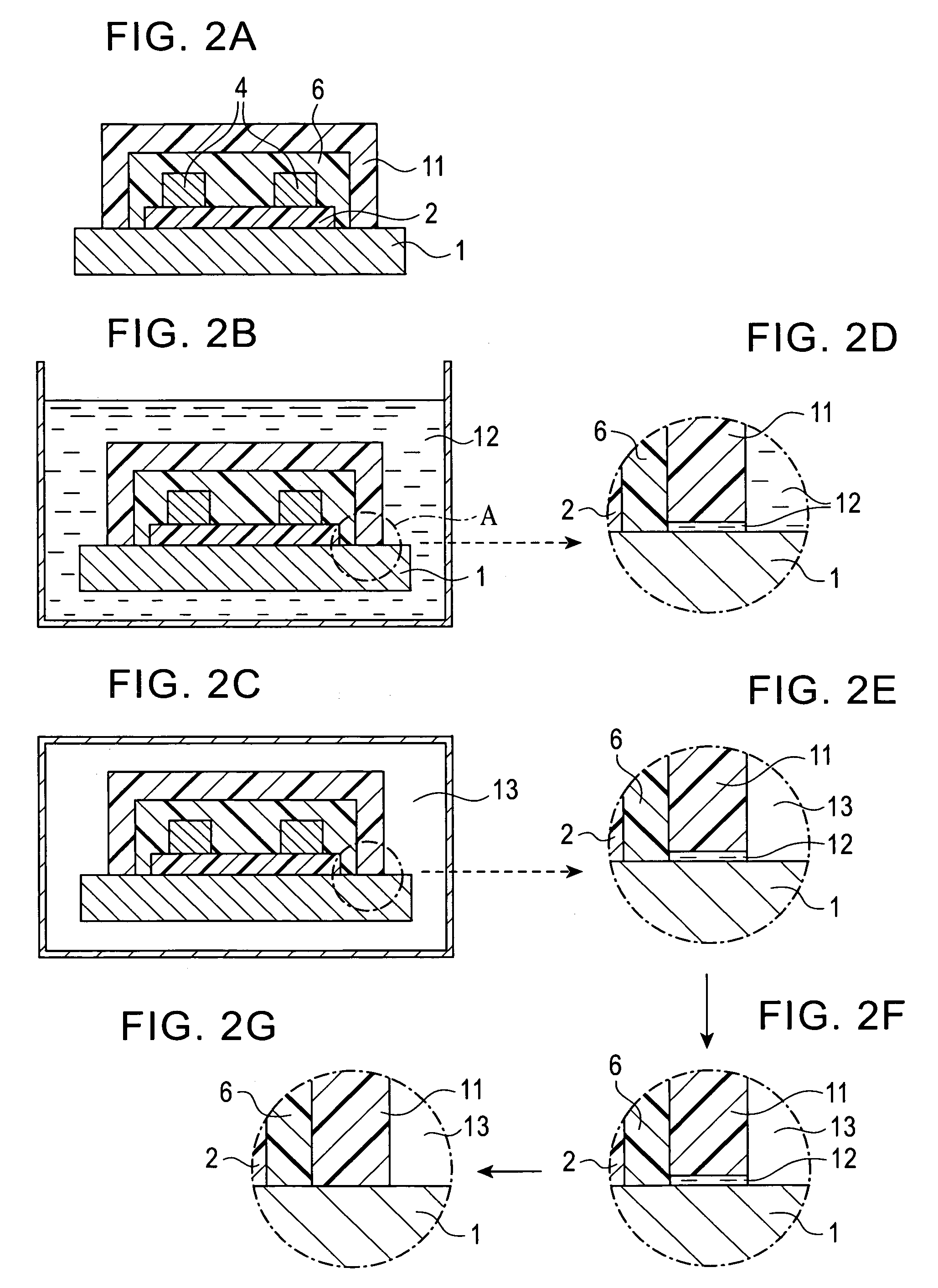Semiconductor device fabrication method
a technology of semiconductor devices and fabrication methods, applied in the field of hf (hydrogen fluoride) cleaning technology, can solve problems such as deteriorating product quality
- Summary
- Abstract
- Description
- Claims
- Application Information
AI Technical Summary
Benefits of technology
Problems solved by technology
Method used
Image
Examples
embodiment 1
[0023]Referring to FIG. 2A to FIG. 2G, a semiconductor device fabrication method according to Embodiment 1 of the present invention will be described. In this embodiment, the semiconductor device is the acceleration sensor, and the semiconductor device fabrication method will be described using the acceleration sensor shown in FIG. 1A and FIG. 1B.
(1) Step 1 (Resist Forming Processing)
[0024]As FIG. 2A and FIG. 1A show, the piezo resistors 3 and aluminum interconnects 4 are formed on the insulation film 2 made of SiO2. The insulation film 2 is formed on the surface of the silicon substrate (beam sections) 1. The insulation film 2 and aluminum interconnects 4 are covered by protective film 6 for protecting them from corrosion. Then the silicon between the outer frame section 1a and weight section 1b is removed by etching leaving the beam sections 1c, so as to create a space where the weight section 1b can displace according to acceleration. In order to perform cleaning to remove foreig...
embodiment 2
[0031]FIG. 3A to FIG. 3F are diagrams of the semiconductor device fabrication method according to Embodiment 2 of the present invention. The second embodiment has Steps 2a and 2b. Step 2a and Step 2b are additional steps executed between Step 2 and Step 3 of Embodiment 1. Alternatively, it can be said that Step 2 of Embodiment 1 is performed by three steps: the first pure water dipping processing (Step 2), surface active agent dipping processing (Step 2a) and the second pure water dipping processing (Step 2b).
[0032]The following description deals with only the differences between the first embodiment and second embodiment to avoid redundant explanation.
[0033]When Step 2 (pure water dipping process) of Embodiment 1 is performed, that is, when the semiconductor device of which circuit area (e.g., protective film 6) on the substrate 1 is covered with the resist 11 is dipped into the pure water 12 as shown in FIG. 3A, the pure water 12 may not filter into the gap between the silicon sub...
embodiment 3
[0038]FIG. 4A to FIG. 4F are diagrams of the semiconductor device fabrication method according to Embodiment 3 of the present invention. The third embodiment has an etchant dipping processing Step 2ax. Step 2ax is a step performed between step 2a and step 2b of Embodiment 2. It can be said that step 2 of Embodiment 1 is performed by four steps: the first pure water dipping processing (Step 2), surface active agent dipping processing (Step 2a), etchant dipping processing (Step 2ax), and second pure water dipping processing (Step 2b). The following description deals with only the difference between the foregoing embodiments and third embodiment.
Step 2ax (Etchant Dipping Processing)
[0039]After Step 2a of Embodiment 2, i.e., after the surface active agent 14 is filtered into the gap between the semiconductor substrate 1 and the resist 11, the semiconductor device is dipped in an HF aqueous solution 15, of which concentration is about 5%, for a short time (e.g., 120 seconds or about 2 mi...
PUM
 Login to View More
Login to View More Abstract
Description
Claims
Application Information
 Login to View More
Login to View More - R&D
- Intellectual Property
- Life Sciences
- Materials
- Tech Scout
- Unparalleled Data Quality
- Higher Quality Content
- 60% Fewer Hallucinations
Browse by: Latest US Patents, China's latest patents, Technical Efficacy Thesaurus, Application Domain, Technology Topic, Popular Technical Reports.
© 2025 PatSnap. All rights reserved.Legal|Privacy policy|Modern Slavery Act Transparency Statement|Sitemap|About US| Contact US: help@patsnap.com



